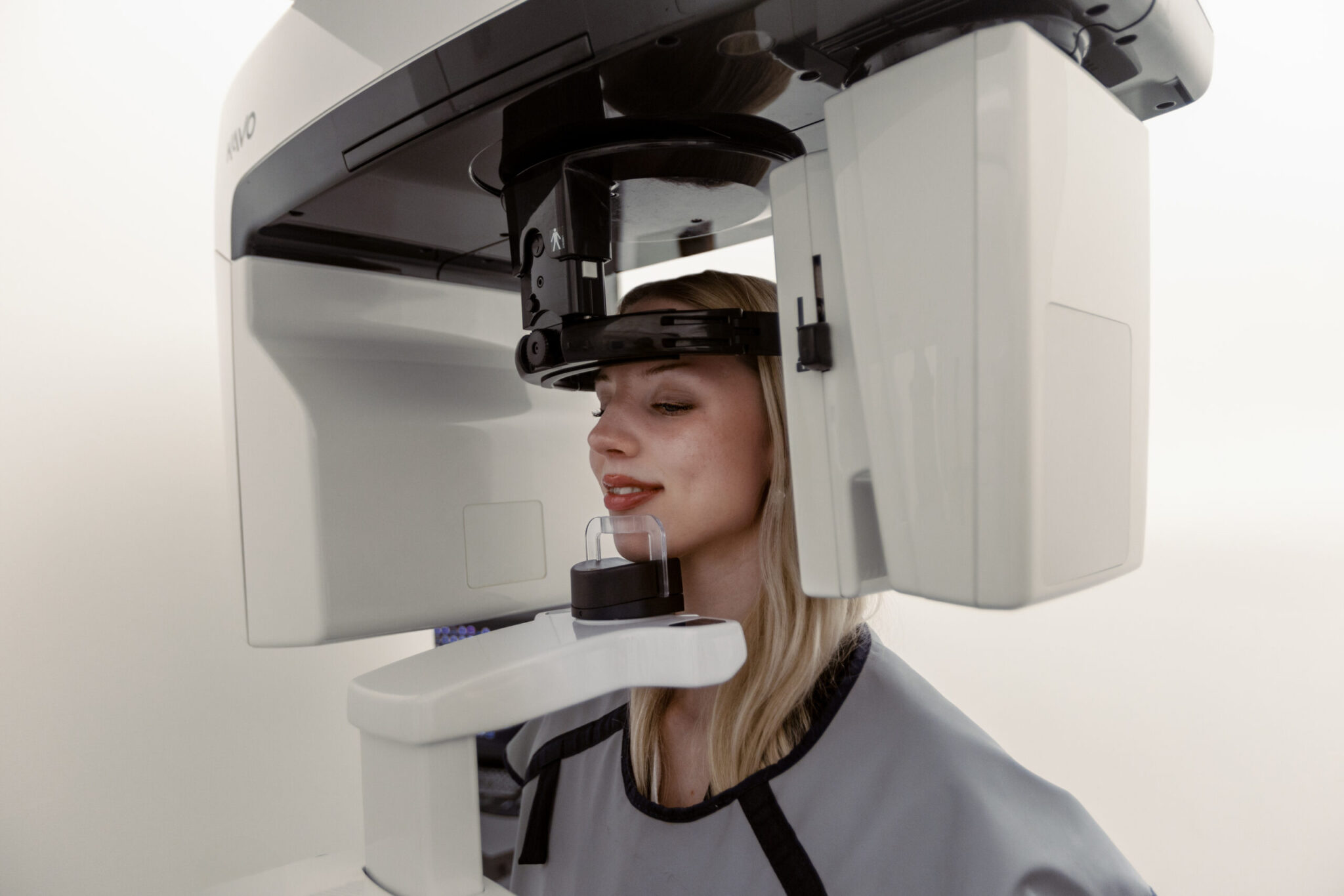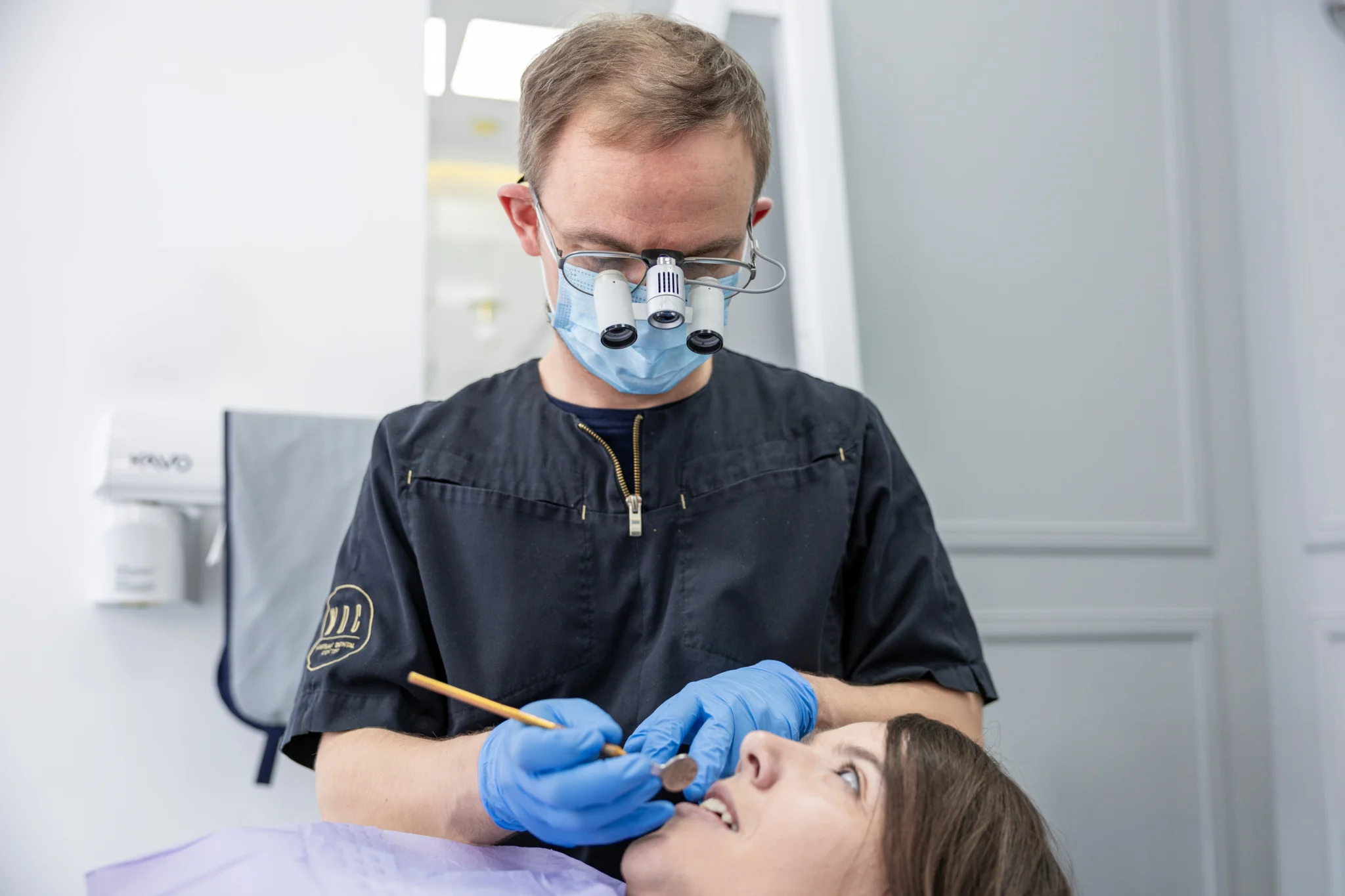
👤 Challenge
A 20-year-old patient came to my office after her dentist noticed a pink spot on the gum near an upper front tooth. No pain, no symptoms — but the pink color indicated a serious issue: invasive cervical resorption (ICR) that could have ended in tooth loss.
🔍 Diagnostics
A CBCT scan gave us a 3D view of the damage — the lesion was deep and close to the pulp chamber. We confirmed ICR: a silent process where the body “eats” the tooth from the neck down, often without symptoms and frequently detected too late.
💡 Treatment Plan
- CBCT — precise 3D diagnostics.
- Micro-surgical cleaning of the lesion under a microscope.
- Minimally invasive restoration of the tooth structure.
- Avoiding root canal treatment if possible.
⚙️ Treatment Process
First visit: surgical procedure — cleaning the lesion, filling with a biocompatible material, suturing the gum. Unfortunately, the lesion was deep — root canal treatment was necessary.
Second visit: microscopic endodontic treatment, cleaning and filling the canal with a biocompatible material, reinforcing the tooth with a glass fiber post.
📍 Before & After
Before
- Pink spot near the gum
- Risk of extraction
- No pain or symptoms
After
- Tooth saved
- No pain or discomfort
- Natural smile, no color difference


Tooth saved — thanks to Dr Urszula Leończak’s precise micro-surgery.
“I felt no pain but could have lost the tooth. Thanks to quick treatment, my smile is whole again.”
💭 Doctor’s Reflections
- No pain doesn’t mean no problem.
- ICR develops silently — CBCT is crucial.
- The sooner it’s found, the higher the chance to save the tooth.
“With 3D diagnostics and microscope work, we can save natural smiles.”
📌 Takeaway
Don’t skip check-ups — even if nothing hurts. Regular scans and exams can save a tooth before a problem appears. Book a consultation with Dr Urszula Leończak and protect your smile.



